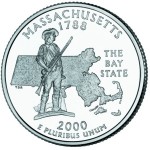With the new year here, many of you may be feeling a renewed pressure to meet goals and continue to grow portfolio size and revenue for your company. By this point, every bank knows what that ‘magic’ growth number is that they’d like to meet in order to consider 2016 to be a success.
So, how is your bank reacting to that ‘magic’ number? What did you do last year that will ensure you can easily meet your goals in 2016?
In terms of meeting goals, perhaps one of the most important cultural ideas to address is that of proactive vs reactive. This is often addressed in terms of individuals or teams, but rarely addressed in terms of the entire organizational culture.
Take a second and ask yourself — which is the culture of your bank? Understanding this one thing about your bank will begin to help you understand your place in the company and will help you make the right hiring decisions.
Does there seem to be a focus solely on addressing issues and problems as they come up? Is your company constantly looking for ways to improve for the long-term, or are they happy maintaining a status quo?
Both are viable business strategies, by the way. There are small banks that have no desire to grow beyond a certain limit, while other banks have not put a cap on the growth they want to see. You have to know your organization’s stance on this in order to understand how to be successful there.
If your bank is a reactor, the ability to immediately capitalize on fresh ideas and opportunistically on-board new talent may be limited. However, every bank still has goals and numbers to meet. So, the question then becomes: if your bank’s culture is reactive vs proactive, what would stand in the way of your bank meeting its goals?
I would suggest that, even in a reactive culture, there still needs to be an element of proactivity. There is, perhaps, no better illustration of this than with the coming wave of retirements we’ll be seeing in the next few years. You would be surprised how few organizations are prepared for a retirement, let alone an unexpected retirement or absence.
Especially for a critical role, who have you hired to take the place of an executive that may leave unexpectedly? Perhaps you’re next in line — who is taking your place? If that person’s already identified, who is taking that person’s place?
With this in mind, consider this thought: there is a need to hire talented people whenever they become available, not just when it’s convenient.
If a key employee in your organization leaves tomorrow without a competent replacement, that could potentially cost your organization thousands of dollars in revenue in a short period of time. And, if that replacement isn’t easily found, that could cost the organization millions in lost revenue.
This, then, becomes less about hiring purely opportunistically and more about mitigating risk for the bank, which is something that should appeal to both cultures.
So, as we begin 2016, take a moment to reflect on your bank’s culture, then take time to think about what areas of the bank are at risk.
The one time a key employee leaves with no suitable replacement in the foreseeable future would be the worst possible time to suddenly discover that your bank is a reactor.





